Kotter’s eight steps to change Management
Introduction
John Kotter, a professor at Harvard Business School, has studied many companies that have successfully implemented change in their organizations. This led him to develop a common eight-step model that other organizations can follow to make change. He describes his eight-step change process in his book, Leading Change.
Although described as a model for change management and change leadership, it is worth noting that Kotter’s eight steps are closely related to improvement planning. The human tendency toward routine means that change is a conscious desire to improve things or the need to adapt to changing circumstances.
Kotter’s 8 steps Model
Kotter’s 8 steps are effective for managing individual projects or process improvements, or level changes, but their purpose is to create a broader culture of change for the entire organization. Kotter’s 8 steps are:
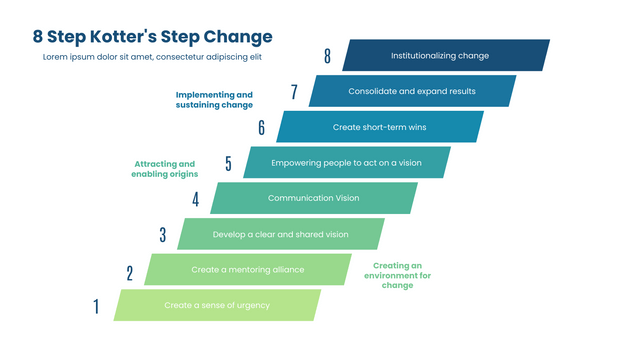
Edit this Kotter’s 8-Step change Model Template
- Create a sense of urgency: The first step focuses on how to motivate people to realize the importance of change. Create a sense of urgency so that people understand that they need to take action now. Highlight the goals of the program and demonstrate how they will benefit the team or organization.
- Assemble a leadership team: Build a strong and authoritative leadership team to drive the change, who will be ambassadors for the change initiative.
- Design a vision strategy: Develop a strategy and communicate it to a larger group. We discussed a very high level strategy, but now the strategy needs to be defined in a more detailed and concise way, creating specific initiatives for achieving small milestones that will collectively guide the organization toward its ultimate goals.
- Communicate at scale: Communicate the strategy and initiatives to the broader organization. The goal is to communicate the plan and gain consensus so that people buy into the changes. Recruit people to help put these changes into action; there is strength in numbers.
- Remove barriers to change: It’s easy to lose momentum when you encounter obstacles. To achieve goals and initiatives, any barriers to progress need to be removed.
- Accumulate short-term victories: It is important to demonstrate small victories along the way. Clear progress and frequent successes will continue to motivate the team. Successfully completed small initiatives combine to successfully achieve the end goal.
- Facilitate deeper change: Achieving short-term wins is one thing, but the real goal is to make consistent progress toward the organization’s long-term goals. Focus on repeat wins.
- Integrate results into the culture: Place the change in the corporate culture. Constantly work to ensure that change is accepted and seen as an opportunity for the entire enterprise. This makes any new strategic plan easier to achieve, creating a more agile organization.
More Kotter’s 8-Step Change Model (Templates and Examples)
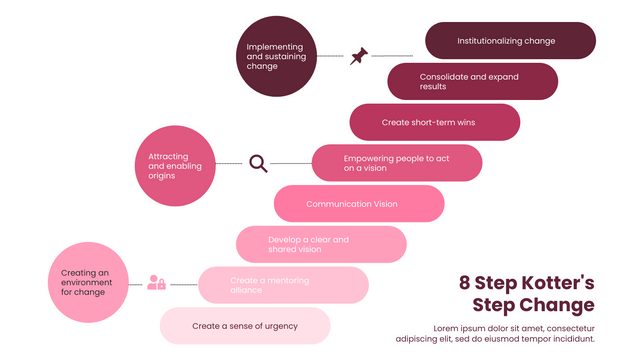
Edit this Kotter’s 8-Step change Model Template
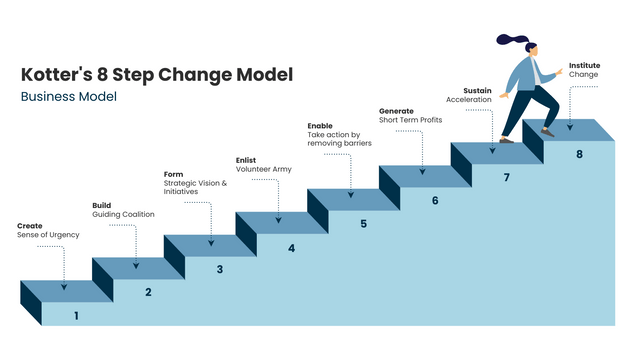
Edit this Kotter’s 8-Step change Model Template
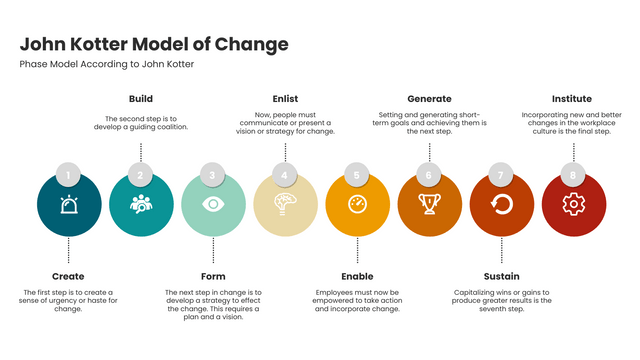
Edit this Kotter’s 8-Step change Model Template
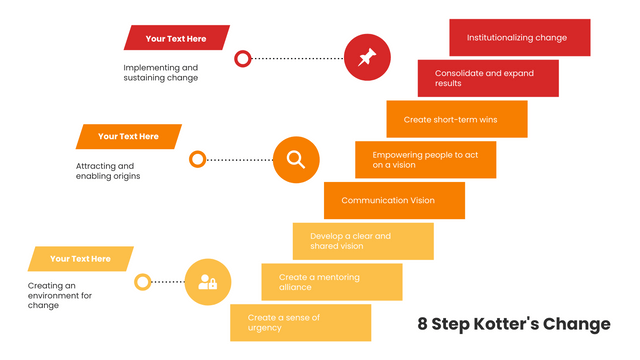
Edit this Kotter’s 8-Step change Model Template
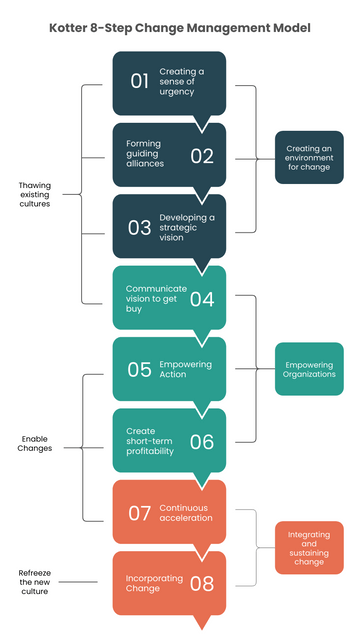
Edit this Kotter’s 8-Step change Model Template
This post is also available in Deutsche, Español, فارسی, Français, Bahasa Indonesia, 日本語, Polski, Portuguese, Ру́сский, Việt Nam, 简体中文 and 繁體中文.














